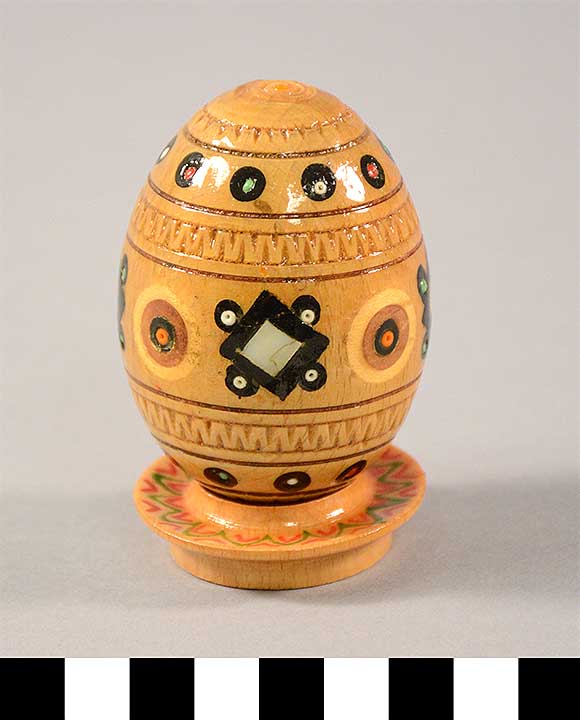Pysanka, Easter Egg
1978.04.0018A
Detailed Images
Basic Information
| Artifact Identification | Pysanka, Easter Egg (1978.04.0018A) |
|---|---|
| Classification/ Nomenclature |
|
| Artist/Maker | Unknown |
| Geographic Location | |
| Period | N/A |
| Date | 1970—1978 |
| Culture | Ukrainian, Hutsul, Huculian |
| Location | Not on Exhibit |
Physical Analysis
| Dimension 1 (Height) | 6.6 cm |
|---|---|
| Dimension 2 (Diameter) | 4.6 cm |
| Dimension 3 (N/A) | N/A |
| Weight | 52 g |
| Measuring Remarks | N/A |
| Materials | Animal--Shell, Pigment--Paint, Varnish, Plant--Wood |
| Manufacturing Processes | Turning, Carved, Incising, Inlaying, Painting |
Research Remarks
| Description | N/A |
|---|---|
| Published Description | Under Review |
| Bibliography | Under Review |
Artifact History
| Credit Line/Dedication | Gift of the Ukrainian Student Association, UIUC |
|---|---|
| Reproduction | no |
Contact
All information about our collection is constantly reviewed and updated. Please contact Dery Martínez-Bonilla, Registrar, if there is any information you are looking for that isn't currently online.
